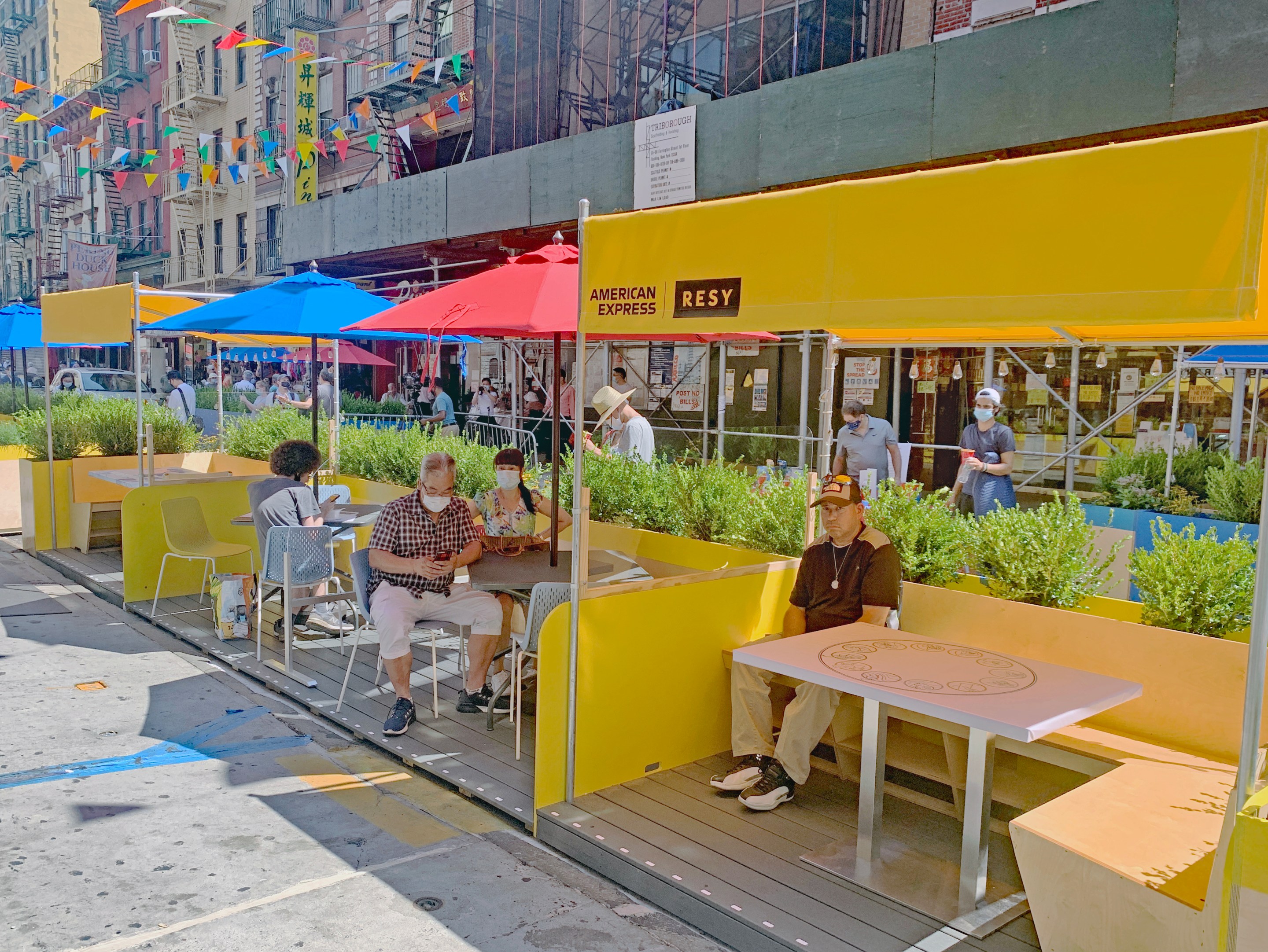The future of the city's economic recovery could be determined by our own two feet, according to a series of proposals from the city's top money man.
According to Comptroller Scott Stringer, the city must help commercial districts — like Tremont Avenue in the Bronx, Roosevelt Avenue in Queens and New Dorp Lane in Staten Island — by converting them from car-dominated districts to bus, bike and pedestrian-friendly areas.

"These are just a handful of the iconic 'Main Streets' where New Yorkers congregate, socialize, shop, eat, learn, explore, and build their communities," the 2021 mayoral candidate wrote in his report "Save Main Street: A Crash Program to Help Save NYC Small Businesses."
"Now more than ever, more space is needed for seating and shelving to assist local restaurants, retail, barber shops, and nail salons...for social distancing and lining up for testing and temperature checks. And more space is needed for bus and bike lanes to help people travel around their neighborhoods as subway use is curtailed."
Stringer's report — a retort, if you will – doubles as his argument for why street safety and livable communities supporters should choose him in 2021 instead of Streets Master Plan mastermind, City Council Speaker Corey Johnson (a Streetsblog "Vision Zero Hero" of the year in 2018).
Among Stringer's suggestions:
- Permanently locking in the outdoor seating program for restaurants and expanding it to other types of businesses
- Vastly expanding sidewalk spaces in commercial corridors
- Replacing curbside parking spots with loading zones and garbage storage
- Offering New Yorkers subsidies for purchasing e-bikes
- Repurposing a lane of car traffic on East River bridges to cyclists
- Installing 100 miles of bus lanes in two years (a more ambitious target than the Streets Master Plan's 150 miles in five years)
- Fully funding and speeding up the proposed Green Wave bike network and attempting to build the Regional Plan Association's 450-mile Five Borough Bikeway
Taking a cue from the success of the city's restaurant street seating program, the report suggests that the program should run permanently from March 15 to Nov. 1 every year, which would be an earlier start than the mayor's recently announced June 1 seasonal start, aided by easy renewal of the permits for the outdoor seating. Stringer said that while it's impressive that just a tick under 10,000 restaurants have signed up for the program, the city should work on inviting restaurants that haven't jumped on the outdoor seating invitation, and ensure that every neighborhood is included in the city's hottest new amenity.
Stringer also revived his argument for expanded sidewalks, made earlier in the pandemic, as a way to provide more room for sidewalk retail and restaurant seating, but also as a way to provide room for street vendors and for public amenities that have been left out of the current restaurant seating, like non-restaurant sidewalk seating and public bathrooms. Under the comptroller's vision, massive amounts of free street parking would be converted in loading zones, pickup and drop off areas and garbage storage (the latter one was recently attempted by activists in Hells Kitchen).
On buses, Stringer called on the city to install 100 miles of bus lanes in the next two year, fives times the amount of red paint that's supposed to go down in 2020. And on bikes, Stringer noted that the majority of car and transit trips in the city are less than five miles, so he wants to increase bike ridership by 1,000 percent over the next three years by building a dozen miles of "bike priority streets" (with special pavement markings to alert drivers to slow down and move behind bikes), and expanding Citi Bike to Staten Island and further and faster into other boroughs.
Stringer also called for the city to truly embrace the e-bike for every class of rider and offer subsidy similar to the $540 subsidy Italians can get for buying an e-bike.
In addition to implementing the citywide bike network promised in the Green Wave before its planned completion in 2030, the candidate called for camera-enforced bike lanes and a massive project to repave streets with bike lanes in order to make them safer. He also suggested that the city subsidize cycling lessons for New Yorkers who are new to the road, and renewed and expanded his call to reallocate space on the Brooklyn Bridge for cycling, this time pushing for bike lanes on the roadbed of the Brooklyn and Queensboro Bridges.
If even a handful of the changes in the report were implemented, they would remake streets, neighborhoods and whole boroughs. And in addition to helping draw foot traffic to the commercial districts, Stringer said that the changes would help employees of non-Manhattan commercial districts because 35 percent of employees along non-Manhattan commercial corridors take the bus, bike or walk to work.
Safe streets advocates also praised the plan as one that made room for more people than just the driving class to spend money in commercial districts.
"Streets that prioritize pedestrians and cyclists are good for business," said Transportation Alternatives spokesman Joe Cutrufo, a statement backed up by studies of bike lanes done all over the world. "People eat at restaurants and buy things in stores. Cars don't."
Speaker Johnson declined to comment.






